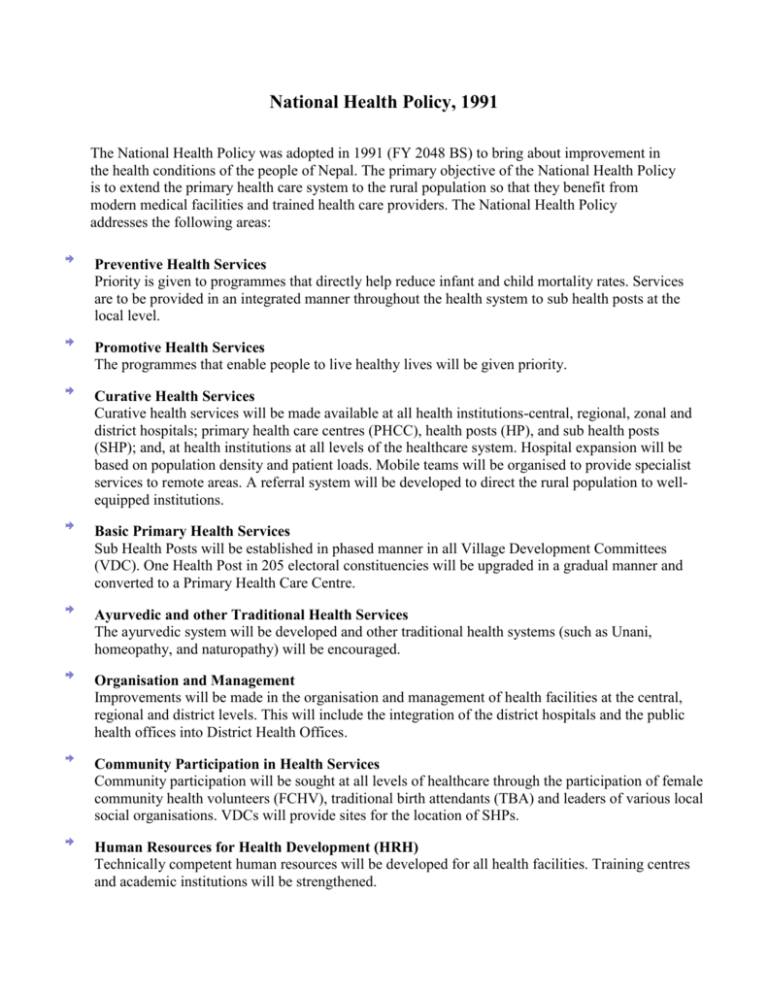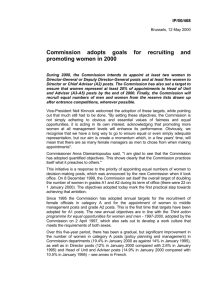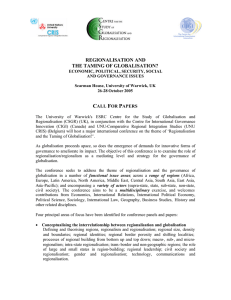National Health Policy, 1991 - Department of Health Services
advertisement

National Health Policy, 1991 The National Health Policy was adopted in 1991 (FY 2048 BS) to bring about improvement in the health conditions of the people of Nepal. The primary objective of the National Health Policy is to extend the primary health care system to the rural population so that they benefit from modern medical facilities and trained health care providers. The National Health Policy addresses the following areas: Preventive Health Services Priority is given to programmes that directly help reduce infant and child mortality rates. Services are to be provided in an integrated manner throughout the health system to sub health posts at the local level. Promotive Health Services The programmes that enable people to live healthy lives will be given priority. Curative Health Services Curative health services will be made available at all health institutions-central, regional, zonal and district hospitals; primary health care centres (PHCC), health posts (HP), and sub health posts (SHP); and, at health institutions at all levels of the healthcare system. Hospital expansion will be based on population density and patient loads. Mobile teams will be organised to provide specialist services to remote areas. A referral system will be developed to direct the rural population to wellequipped institutions. Basic Primary Health Services Sub Health Posts will be established in phased manner in all Village Development Committees (VDC). One Health Post in 205 electoral constituencies will be upgraded in a gradual manner and converted to a Primary Health Care Centre. Ayurvedic and other Traditional Health Services The ayurvedic system will be developed and other traditional health systems (such as Unani, homeopathy, and naturopathy) will be encouraged. Organisation and Management Improvements will be made in the organisation and management of health facilities at the central, regional and district levels. This will include the integration of the district hospitals and the public health offices into District Health Offices. Community Participation in Health Services Community participation will be sought at all levels of healthcare through the participation of female community health volunteers (FCHV), traditional birth attendants (TBA) and leaders of various local social organisations. VDCs will provide sites for the location of SHPs. Human Resources for Health Development (HRH) Technically competent human resources will be developed for all health facilities. Training centres and academic institutions will be strengthened. Resource Mobilisation in Health Services National and international resources will be mobilised and alternative concepts (such as health insurance, user charges, and revolving drug schemes) will be explored. Private, Non-Governmental Health Services and Inter-sectoral Co-ordination The Ministry of Health will co-ordinate activities with the private sector, non-governmental organisations (NGOs), and non-health sectors of HMG. The private sector and NGOs will be encouraged to provide health services. Decentralisation and Regionalisation Decentralisation and regionalisation will be strengthened; peripheral units will be made more autonomous. District Health Offices (DHO) will have a prominent role in the planning and management of curative and promotive health services from district to village levels. Blood Transfusion Services The Nepal Red Cross Society will be authorised to conduct all programmes related to blood transfusion. The practice of buying, selling, and depositing blood will be prohibited. Drug Supply Improvements will be made in the supplies of drugs by increasing domestic production and upgrading the quality of essential drugs through effective implementation of the National Drug Policy. Health Research Health research will be encouraged for better management of health services.







